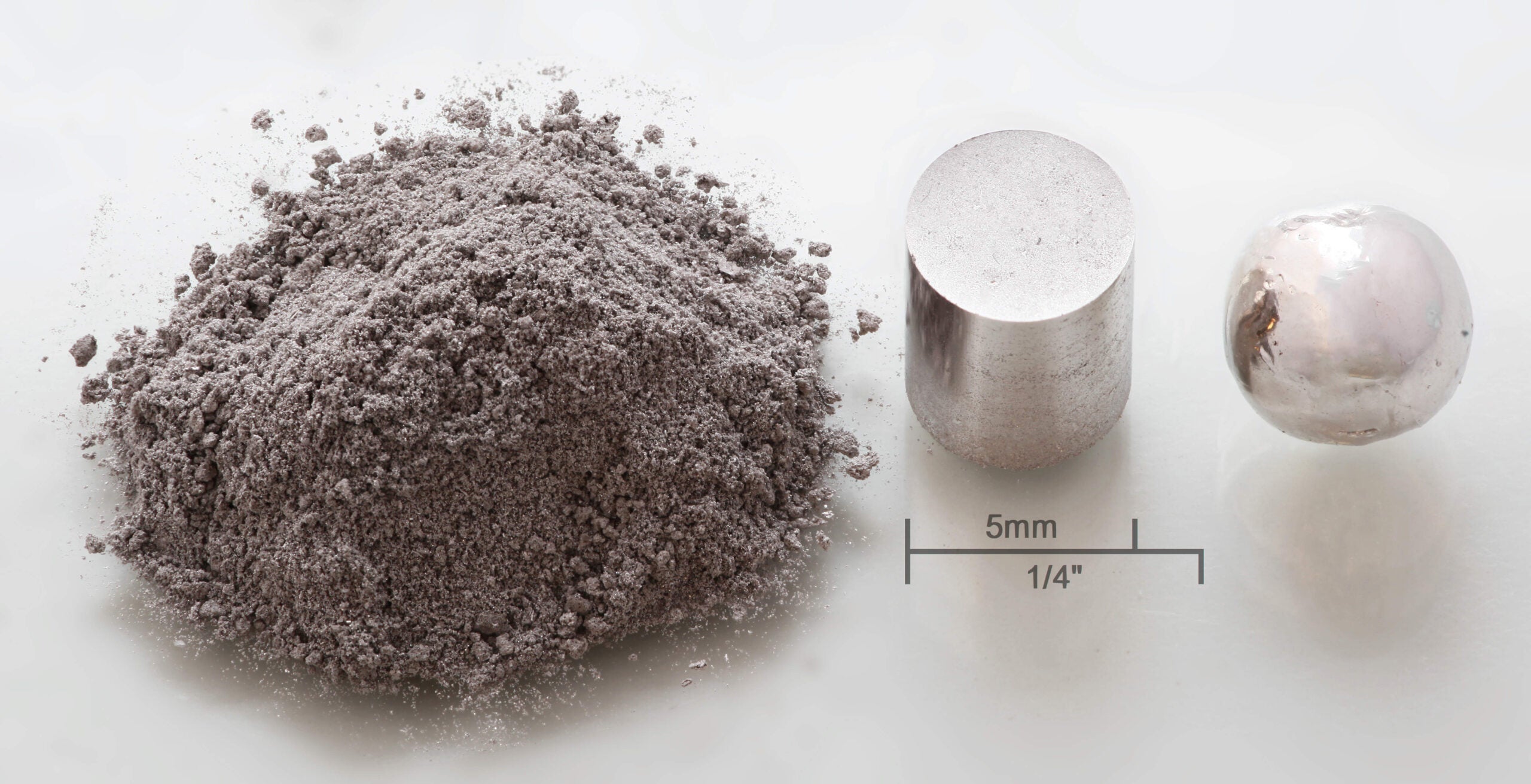
The price of rhodium has rocketed this year, largely on the back of growing demand from automakers in China.
Still, due to its rarity, the small size of the market and concentrated supply, prices are generally volatile. But while this surge currently shows no signs of abating, there could be a limit beyond which the market will refuse to go.
On 20 December 2017, the rhodium price was $1,610 per troy ounce, around $1,000 an ounce higher than the 12-year lows it hit in mid-2016. But 2017 has been a year of two halves for the rare silver-white metal, which is mainly used in the production of three-way catalytic converters for gasoline engines to clean up emissions.
2017: rhodium’s wayward year
In the first half, particularly the first quarter of 2017, prices rose due to speculative buying from banks and investment funds. But when industrial demand started to wane in April as prices hit $1,025 to $1,030 an ounce, the market dipped lower as speculators reduced their bids in order to attract buyers.
Come the second half of the year and demand from several industrial sectors, especially the global automotive, was on the up again.
“This demand for rhodium accelerated as palladium prices exceeded those of platinum amid growing reports of a substantial supply deficit,” explains Nick Jonson, senior editor of markets at S&P Global Platts, a provider of energy and commodities information and a source of benchmark price assessments. “The cheaper platinum is attractive to automakers, but they need more rhodium to be as effective in reducing greenhouse gases and air pollutants. Industrial demand remained steady in H2, even as some speculative funds offered substantial volumes to the market.”

US Tariffs are shifting - will you react or anticipate?
Don’t let policy changes catch you off guard. Stay proactive with real-time data and expert analysis.
By GlobalDataWhile China’s auto sector was driving this growth due to the government incentivising the switch to cars reliant on rhodium, the light vehicle passenger auto sectors in other regions such as the US played a key supporting role. 2017 also saw healthy, albeit sporadic, levels of buying from the glass and chemical sectors globally.
Fundamentals of the rhodium market
Rhodium prices are typically volatile due to a combination of its rarity and the concentrated nature of its supply. South Africa alone produces roughly 80% of the world’s rhodium, which is extracted as a byproduct of platinum and nickel mining, with about one quarter of rhodium production coming from secondary sources, mainly recycled catalytic converters.
The impact that even small changes in supply and demand can have on rhodium prices was best demonstrated around ten years ago. The metal touched $10,025 an ounce just ahead of the 2008 financial crisis, but dropped by 90% before the end of that year.
While around three quarters of global demand for rhodium comes from the auto sector, it is also broadly used in manufacturing. Approximately 5%-7% of global rhodium consumption is in the chemical sector, where rhodium and platinum-rhodium catalysts are used in the production of oxo-alcohol manufacturing, as well as the production of nitric oxide, a raw material for manufacturing fertilisers, explosives and nitric acid.
Its use in glass-based products accounts for a further 3%-6% of rhodium consumption each year. Due to their high melting points, strength and resistance to corrosion, rhodium and platinum can be alloyed to create glass reinforcement fibre for digital displays.
The outlook for 2018
Looking ahead, there are strong indications that prices will continue to move higher in the first half of this year, if demand for gasoline-powered and hybrid vehicles is maintained and palladium, which rose in price by more than 50% in 2017, continues to outpace platinum.
“The biggest single factor I see [influencing the market] is whether demand for gasoline-powered vehicles will continue to rise at the expense of diesel-powered vehicles,” Jonson says. “If so, automakers will continue to buy rhodium to mix with platinum in the catalytic converters for gasoline-powered vehicles, especially in China, which has demonstrated a firm commitment to control polluting industries and products.”
Jonson is also keen to stress that there is a potential limit to the amount prices can rise. “Over the past seven years, rhodium has faced strong resistance from industrial consumers, especially automakers, when prices reached the $2,300-$2,500 an ounce range,” he notes. “There is a very real chance automakers may try to find substitutes for rhodium if prices rise too high. They did so in the months and years after June 2008, when rhodium prices hit $10,000/oz.”
In the near future, however, there’s little danger prices will soar that high. “Prices should continue to flow and I believe rhodium should continue the strong trend higher breaking through the $2,000 mark,” predicts Phillip Streible, senior market strategist at RJO Futures. “China is already the largest automobile market,” he adds, as “rising auto sales have been the main driver for the rally [in rhodium prices] and China’s economy has been picking up steam, therefore vehicle sales should continue to rise.”



